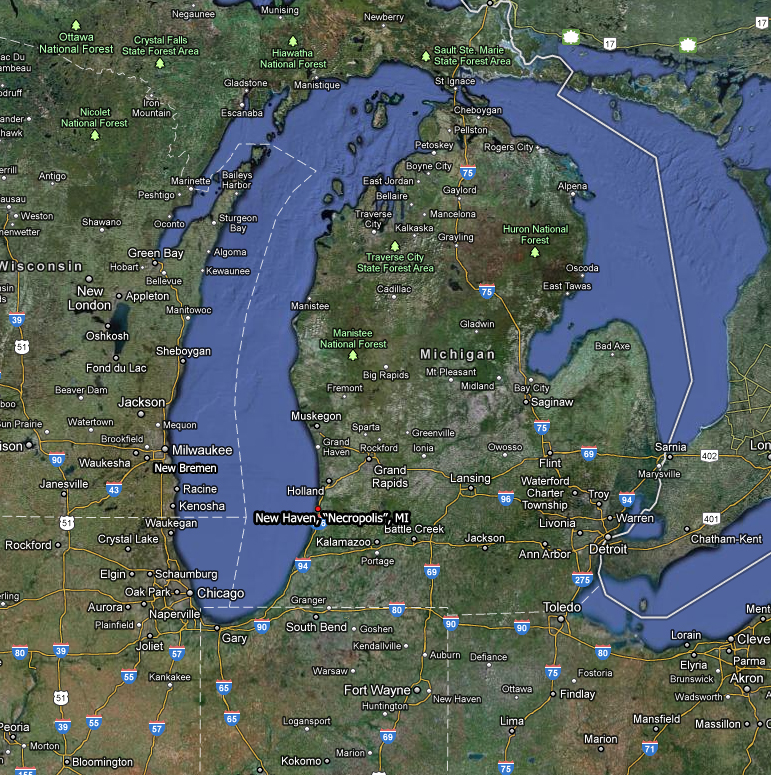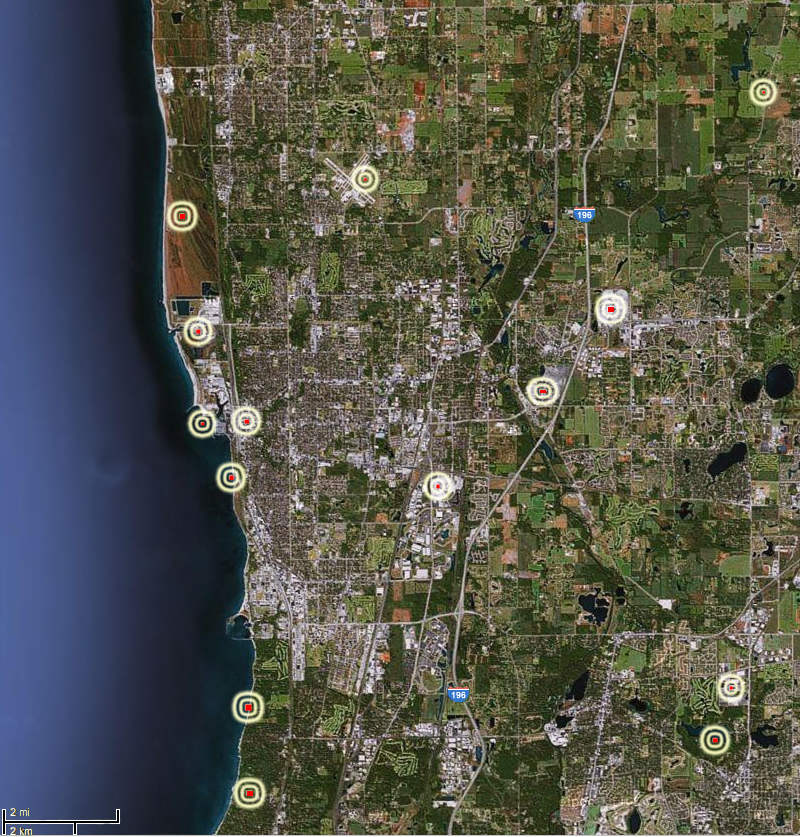3. Local History
It was the early 19th century when on the shores of the west coast of Lake Michigan the first foundations of the now-great metropolis Chicago were laid down. A few years earlier, almost directly across the lake, a small town had popped up, called New Haven. As with so many cities before each of them, the damnable bloodsuckers were involved. The "New Old," as some of the relatively thin-blooded elders fleeing Europe were called, were looking to set up their own kingdoms across the Atlantic. Two methuselahs: one Brujah, the other Toreador, had been feuding in the area before it was settled by the whites. At first, they had battled over the growth and development of the city of Chicago, but when Pale Wolf, the Brujah Methusela, gained an early advantage, Helena, the Toreador, set her sights on another fast-growing township, in order to better hedge her bets, in the event that the Pale Wolf managed to stamp out her allies in Chicago. Both cities did very well initially, growing rapidly as valuable forts and ports.
From the mid-1830's until 1871, the cities both advanced quickly, growing well. In October of 1871, though, disaster struck Chicago and over three square miles of the city burned. The source of the conflagration is in dispute to this day. Some blame the mages. Some, vampires vying for power. Others say it was early hunters, looking to stamp out some threat to humanity. Regardless of who or what initiated the blaze, it served to do for the metropolis what a forest fire does for the trees. The blaze in Chicago heralded the beginning of an intense period of rebuilding, growth, and an outpouring of sympathy from a number of factions and interests. The chaos following the fire caused the Pale Wolf's puppet prince to falter, costing him the seat--and allowing Helena's pawn to be inserted into that place of power. While she feverishly worked through her proxies to shore up her control of Chicago, she allowed her focus to fall off of New Haven. While it continued to grow and flourish, it did so as a vineyard without the gentle hand of a vintner to trim, maintain, and direct its growth. Soon the town was a city. It seemed clear that this city would be a proper metropolis in just a few decades, but that was not to be.
In the earliest days of the 20th century, New Haven got its port first. Steel mills, manufacturing factories, warehouses all grew. It seemed that this mortal-driven natural wonderland might catch up and even eclipse the growth of Chicago. Just to the east of New Haven, along another Great Lake another city had been growing. Detroit was no small success as a center of growth and industry--and it had just fallen to The Sabbat. Suddenly, New Haven found itself in a very precarious position. To the west was a long-held, critical stronghold of Camarilla power. To the northwest was Milwaukee; an outlying puppet of the Chicagoan Prince. To the north was all wild lands, populated by the shapeshifters who had been killed off and forced back to allow for the growth of the cities. To the south, there were naught but smaller towns or suburbs who served Chicago more directly. New Haven was caught between a rock and a hard place, and the city's long-held matron suddenly found the mistake she had made. By failing to hold or develop her interests in the East, she left her power base open to erosion from the Sabbat's growth. Suddenly, New Haven's influence and wealth were being drained in every direction. The metropolis-to-be was now foundering, and set the pace for the rest of the city's future history--and that's when it earned the nickname by which the city would be known better than its proper incorporated name: Necropolis.
Necropolis, The Dead City. Its murder rate didn't help the reputation. The hulking steel mills and silent ports on the lake did not, either. Nominally, Necropolis was claimed by the Prince of Chicago as a part of his Domain, but it did nothing was done to enforce such claims--it was too close to Detroit and too much of a liability to commit any serious resources to its development. At best, several spies and scouts were kept in place to keep tabs on the area. The Sabbat had little interest in the city, as their Archbishop and Bishops were more heavily focused on the contested territories in and around New York. With the ever-present threat of the Garou, the presence of a leyline nexus attracting both the Mage and Changeling populations to the area, Necropolis became a kind of uneasy, unofficial, untended, and unmoderated neutral ground. It was a paradoxical place: Because there were no holds barred, and nothing and no one to keep things in check, no one moved against anyone else. It was a kind of strange, unspoken truce that kept the city propped up and working. It was hard to say how or why--but it did. And so far, into the early years of the 21st century, that's been enough.







